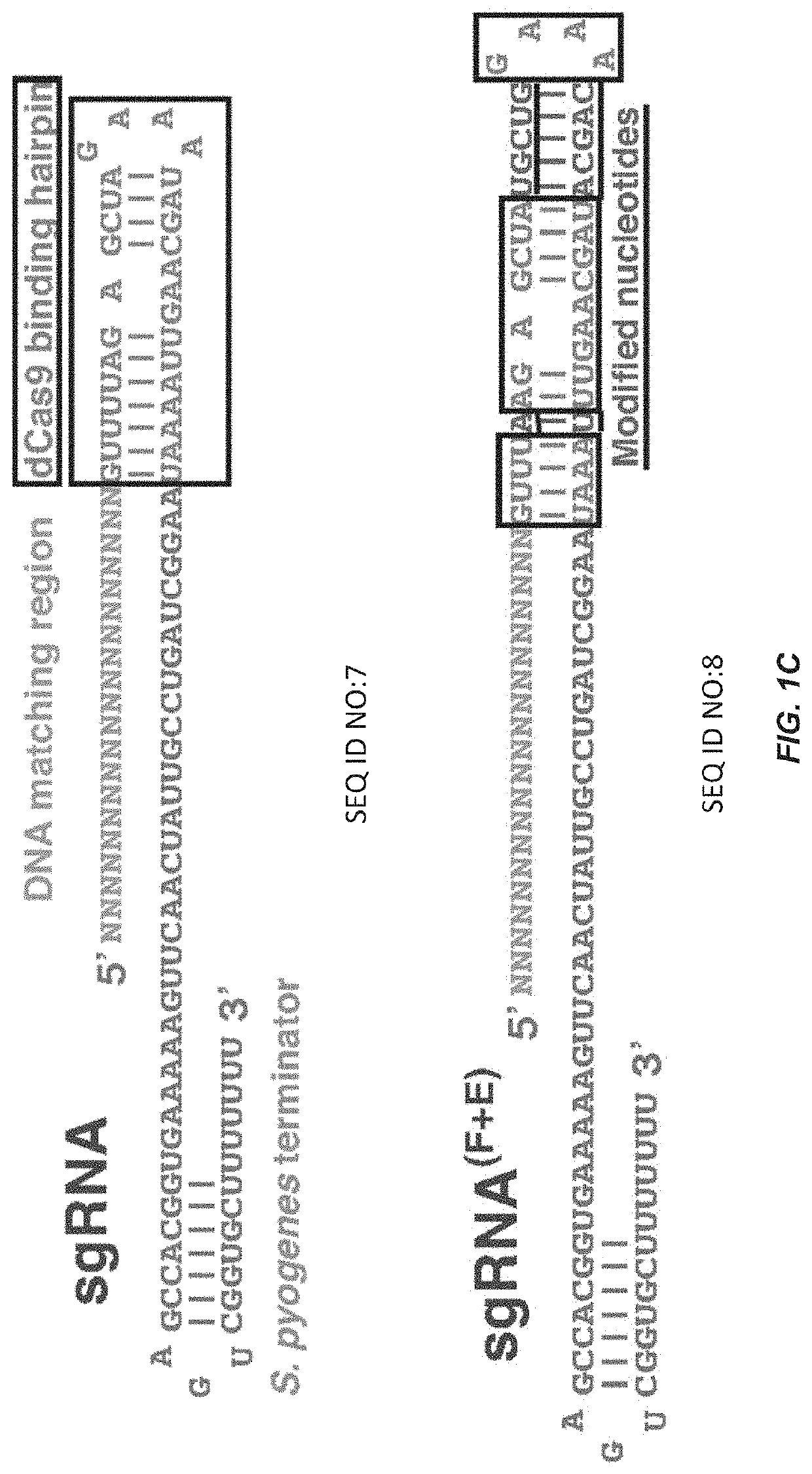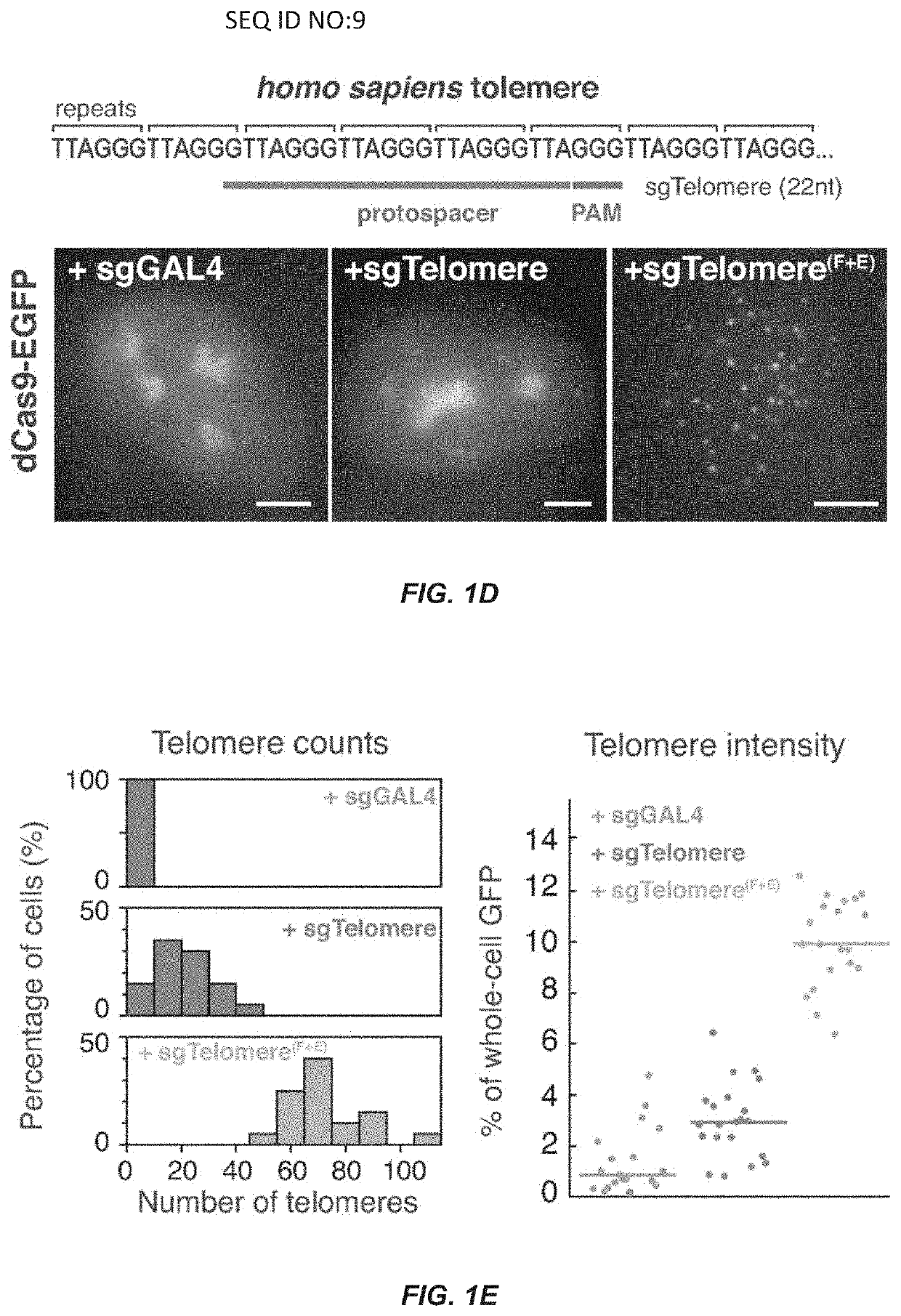Optimized small guide RNAs and methods of use
a technology of small guide rnas and rnas, which is applied in the field of optimizing small guide rnas and methods of use, can solve the problems that the methods and compositions known in art often fail to provide the activity and specificity necessary for routine use, and achieve the effect of increasing stability or activity
- Summary
- Abstract
- Description
- Claims
- Application Information
AI Technical Summary
Benefits of technology
Problems solved by technology
Method used
Image
Examples
example 1
Dynamic Imaging of the Genome in Living Human Cells Via CRISPR
Introduction
[0105]Understanding the dynamic organization and function of genomes requires methods for sequence-specific imaging of genetic elements in living cells. In human cells, the functional output of a genome is strongly determined by its dynamic spatial conformation and interaction with other RNA and protein factors (Misteli, 2007; Misteli, 2013), yet methods for robustly detecting such dynamic information are missing. Artificially synthesized nucleic acid probes and engineered DNA-binding proteins have allowed in situ detection of genetic elements such as telomeres. While fluorescence in situ hybridization (FISH) using fluorescent probes is a rapid method for detecting specific DNA sequences on chromosomes based on Watson-Crick complementarity (Pardue, et al., 1969). FISH requires chemical fixation of cells, precluding its use for live cell imaging. Unlike nucleic acid probes, DNA-binding proteins fused with fluor...
PUM
| Property | Measurement | Unit |
|---|---|---|
| diffusion coefficient | aaaaa | aaaaa |
| time- | aaaaa | aaaaa |
| temperature | aaaaa | aaaaa |
Abstract
Description
Claims
Application Information
 Login to View More
Login to View More - R&D
- Intellectual Property
- Life Sciences
- Materials
- Tech Scout
- Unparalleled Data Quality
- Higher Quality Content
- 60% Fewer Hallucinations
Browse by: Latest US Patents, China's latest patents, Technical Efficacy Thesaurus, Application Domain, Technology Topic, Popular Technical Reports.
© 2025 PatSnap. All rights reserved.Legal|Privacy policy|Modern Slavery Act Transparency Statement|Sitemap|About US| Contact US: help@patsnap.com



